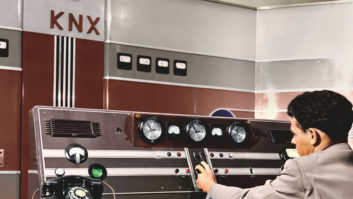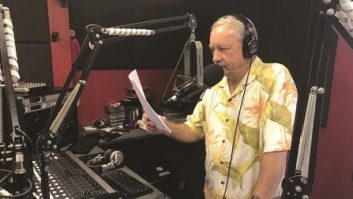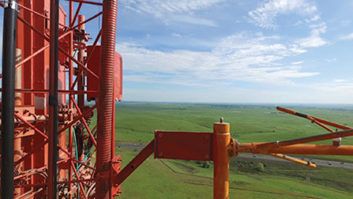If your plan was to keep current with radio engineering technology, you certainly came to the right place. Today’s engineering sessions at this year’s NAB Radio Show provide solid and practical technical information for station engineering personnel, and cover a number of topics that are of interest in today’s rapidly changing technology arena.
Things get down to business with the session “Renting AM Towers to Non-Broadcasters — Practical Tips for Managers and Engineers,” 8 a.m. Presented by Gary Cavell, with Cavell, Mertz & Associates Inc. and Erwin Krasnow, with Garvey Schubert Garer, the session will focus on increasing an AM station’s bottom line by renting out tower space to cell-phone and other mobile-radio service providers. They will examine the issues involved — technical, liability concerns and FCC involvement — in making AM radiators do double duty.
“Most of the time people don’t think of using AM antenna systems for supporting other antennas, but as cell [phone companies] look for more and more places to put antennas, AM stations are being looked at for this purpose,” Cavell said. “Within the industry we’re seeing a lot of consideration being given to this as municipalities become more and more allergic to new tower construction. If someone comes to you with a proposal, you need to know what the pitfalls and possibilities are. Cellular companies have a different culture and different missions from broadcasters; getting over this stumbling block is part of the challenge.”
Jim Loupas, of James Loupas Associates, takes center stage and delves into the world of psycho acoustics with his presentation, “Psycho Acoustics: Is Jim Loupas Crazy When He Says Branding with Sound Will Make Your Radio Station More Successful?,” 9 a.m.
Loupas considers sound branding to be a potent weapon among the cache that broadcasters have at their disposal. He says that processing is only part of the recipe for creating a unique and captivating “sound” for your station. Attend this session and learn what other ingredients are needed to implement sound branding at your facility.
FM BOOSTER WORKSHOP
FM boosters can provide an opportunity for stations to substantially improve their reach by filling in what would otherwise be dead spots in their service area. Boosters, as opposed to FM translators, operate on the same frequency as the station using them and require careful engineering to prevent unintended interference to the full-power station’s signal. The technology has been around for a couple of decades, with boosters numbering in the hundreds now being licensed.
“FM Boosters — Opportunities and Challenges,” 10 a.m., will be presented by Stan Salek with Hammett & Edison.
Salek’s presentation will include the information needed to implement FM booster technology in connection with your station. He will describe analog FM booster technology, as well as digital configurations for use with IBOC signals.
“Implementation of FM boosters can be a challenging thing to do, as you have to be careful not to cause interference to the main FM station itself,” said Salek.
Salek will describe a number of booster case histories concerning both successful implementations and failed projects, and in the process, hopefully steer attendees from the wrong approaches to setting up supplemental coverage technology.
“Failures are usually pretty short-lived,” Salek said. “Stations get an FCC permit to put a booster on the air and then can’t make it work. The permit expires and that’s the last you hear about it.”
CONTROLLING IT REMOTELY
Tony Peterle, Audemat Inc., will offer a workshop presentation on “Advances in Remote Control Technology,” 11 a.m.
Peterle will explore new technologies available for remotely controlling and monitoring transmitter and other equipment functions.
©NAB












